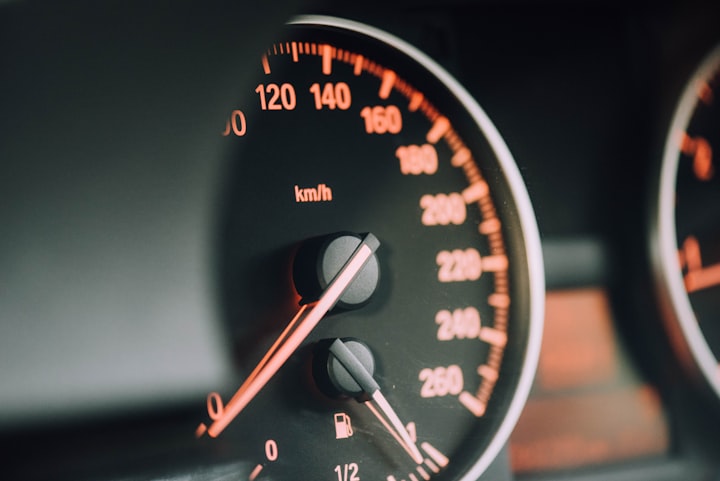
However, drivers often encounter situations where their speedometer readings do not seem to match their perceived speed or external speed measuring devices. This discrepancy can lead to confusion, potential traffic violations, or even safety risks. Understanding the reasons behind speedometer inaccuracies is crucial for addressing and rectifying these issues. Moreover, modern solutions like online GPS speedometers offer an innovative approach to obtaining precise speed readings.
An inaccurate speedometer can be caused by a variety of factors, ranging from mechanical issues to modifications and general wear and tear. Here are some of the primary reasons for an inaccurate speedometer:
Mechanical Wear and Tear
- Mechanical speedometers: These have numerous moving parts that can wear down over time, leading to inaccurate readings.
- Electronic speedometers: The sensors in electronic speedometers can malfunction or accumulate dirt and dust, which can interfere with their accuracy.
Vehicle Modifications
- Aftermarket rims and tires: Speedometers are calibrated based on the stock wheel size of the vehicle. If the wheel size is changed, it can cause the speedometer to display an incorrect speed.
- Changes to the vehicle's transmission or differential: Modifications that alter the gear ratios can affect how the speedometer reads the vehicle's speed.
Tire-Related Issues
- Tire wear: As tires wear down, their diameter changes, which can affect the speedometer reading.
- Tire pressure: Fluctuations in tire pressure can also affect the diameter of the tire and, consequently, the speedometer accuracy.
- Tire temperature and load: These factors can change the shape and size of the tire, impacting the speedometer.
Environmental and Operational Factors
- Damaged wiring or blown fuses: These can disrupt the signal to the speedometer, causing it to display incorrect information.
- Malfunctioning sensor or engine control unit (ECU): If these components are not working correctly, they can report erroneous speeds.
Calibration Issues
- Factory calibration: Car manufacturers usually calibrate speedometers to show a speed slightly higher than the actual speed to give drivers a margin for error. Federal law allows factory speedometers to read up to 10% higher or lower than the actual speed.
- Speedometer calibration: Over time, or after modifications, a speedometer may need recalibration to ensure accuracy. This process involves comparing the speedometer reading with the vehicle's true speed, often using a dynamometer.
Legal and Safety Considerations
- Legal compliance: Manufacturers may deliberately calibrate speedometers to read slightly high to avoid liability for drivers inadvertently speeding due to an underestimating speedometer.
- Speedometer calibration certificates: These can be used in court to potentially reduce fines for speeding tickets if it can be proven that the speedometer was inaccurate at the time of the offense.
Technological Limitations
- GPS limitations: While GPS can provide accurate speed readings, it is not always reliable due to signal loss in certain environments, such as tunnels or areas with tall buildings.
- Electronic stability control systems: These systems calculate a vehicle's actual velocity for safety purposes, but this information is not always used to calibrate the speedometer.
In summary, an inaccurate speedometer can result from mechanical wear, vehicle modifications, tire issues, environmental factors, calibration needs, and technological limitations. Regular maintenance and awareness of these factors can help ensure that a vehicle's speedometer provides the most accurate readings possible.
Factors Affecting Speedometer Accuracy
Tire Size and Wear
One of the most common reasons for speedometer inaccuracies is changes in tire size or significant tire wear. Speedometers are calibrated based on the factory specifications of a vehicle, including tire size. If tires are replaced with a size different from the original specifications, or if there is significant wear, the circumference of the tires changes. This alteration affects the rotation speed captured by the vehicle's sensors, leading to inaccurate speedometer readings.
Vehicle Modifications
Modifications to a vehicle, such as changes to the transmission or differential gear ratios, can also impact speedometer accuracy. These modifications alter the mechanical or electronic signals sent to the speedometer, causing it to display incorrect readings. It's essential for vehicle modifications to include adjustments or recalibration of the speedometer to maintain accuracy.
Aging and Wear of Speedometer Components
In vehicles with mechanical speedometers, aging and wear of the speedometer cable can lead to inaccuracies. Over time, the cable may stretch or wear out, affecting its ability to accurately transmit speed data from the vehicle's transmission to the speedometer. Similarly, electronic speedometers rely on vehicle speed sensors, which can degrade or malfunction, leading to erroneous speed readings.
The Solution: Online GPS Speedometers

Given the limitations and potential inaccuracies of traditional speedometers, drivers are turning to modern solutions like online GPS speedometers. The website How Fast Am I Going offers an innovative online GPS speedometer that leverages satellite data to provide accurate and real-time speed readings. Unlike traditional speedometers, which depend on the vehicle's internal mechanics, the online GPS speedometer calculates speed based on the change in geographical position over time. This method offers several advantages:
- Accuracy: GPS speedometers are generally more accurate than traditional speedometers, as they continuously track movement using satellite signals, providing an exact representation of the vehicle's speed.
- Versatility: Online GPS speedometers can be used in various vehicles, including cars, bikes, and boats, offering a reliable speed measurement tool without the need for hardware modifications.
- Real-time Updates: Users receive immediate speed readings, allowing for quick adjustments to ensure safe and legal driving speeds.
- Maintenance-Free: With no moving parts, online GPS speedometers are less prone to mechanical failures, ensuring long-term reliability.
Conclusion
While traditional speedometers are an essential component of vehicle instrumentation, factors like tire wear, vehicle modifications, and component aging can lead to inaccuracies. These inaccuracies not only pose safety risks but can also lead to legal issues. Online GPS speedometers provide a modern, accurate, and versatile solution for measuring speed, addressing the limitations of traditional speedometers and enhancing driving safety and compliance.





Comments
There are no comments for this story
Be the first to respond and start the conversation.